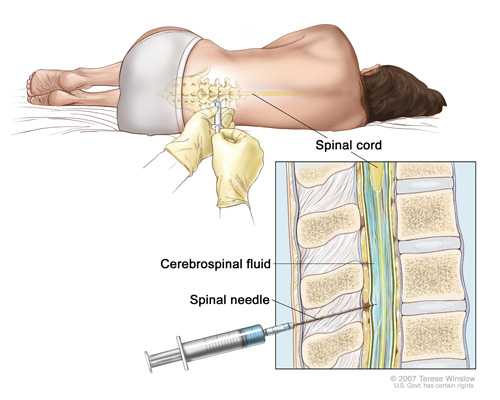Diagnosis, Treatment, and Complications
On this Page
Diagnosis
Haemophilus influenzae, including Hib, disease is usually diagnosed with one or more laboratory tests using a sample of body fluid, such as blood or spinal fluid.
Treatment
Haemophilus influenzae, including Hib, disease is treated with antibiotics, usually for 10 days.
H. influenzae, including Hib, disease is treated with antibiotics (medicines that kill bacteria in the body), usually for 10 days. Most cases of invasive disease (when bacteria invade parts of the body that are normally free from germs) require care in a hospital.
When H. influenzae cause a non-invasive infection, like bronchitis or an ear infection, antibiotics may be given to prevent complications. Learn more about using antibiotics for respiratory infections.
Lumbar puncture to collect sample of cerebrospinal fluid

©Teresa Winslow - US Government has certain rights
Complications
Complications depend on the type of invasive infection caused the bacteria. For example, if H. influenzae cause meningitis (infection of the covering of the brain and spinal cord), a person can suffer from brain damage or hearing loss. Bacteremia (blood infection) can result in loss of limb(s). Invasive H. influenzae infections can sometimes result in death. Even with antibiotic treatment, about 3 to 6 out of every 100 children with meningitis caused by Hib die from the disease.
When H. influenzae cause a non-invasive infection, like bronchitis or an ear infection, complications are rare and typically not severe. If appropriate, antibiotics can be given to prevent complications. Learn more about using antibiotics for respiratory infections.
- Page last reviewed: July 25, 2016
- Page last updated: July 25, 2016
- Content source:


 ShareCompartir
ShareCompartir